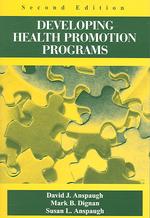Full Description
This second edition of the bestselling textbook provides up-to-date coverage of all areas of the field. As well as being fully revised and updated throughout to reflect the most recent developments in the field (including coverage of the neural theory of language paradigm and the latest cognitive semantic and constructional approaches to language and the mind), this second edition also includes: A brand new section exploring New-Horizons in Cognitive Linguistics covering advancements in the field including linguistic relativity, English language teaching and bilingualism, cognitive sociolinguistics and cognitive humanities. An innovative new chapter entitled Key Topics in Language Science exploring the 'burning questions' in language science such as the relationship between human language and non-human communication systems, whether there are language universal etc. A new chapter dedicated to Research Methods in Cognitive Linguistics exploring the range of methodologies, the research areas, data and questions and offering an evaluation of their relative merits.
This will include hands on check list of the research cycle for students who seek to apply cognitive linguistics in their own research projects and dissertations. While all topics are introduced in terms accessible to both undergraduate and postgraduate students, this work is sufficiently comprehensive and detailed to serve as a reference work for scholars from linguistics and neighbouring disciplines who wish to gain a better understanding of cognitive linguistics. The book is divided into four parts and is therefore suitable for a range of different course types, both in terms of length and level, as well as in terms of focus. In addition to defining the field, the text also includes appropriate critical evaluation. Complementary and potentially competing approaches are explored both within the cognitive approach and beyond it. For example conceptual metaphor theory is compared and contrasted with conceptual blending theory in terms of methodology, assumptions, scope and phenomena.
Contents
Preface; List of figures; List of tables; List of abbreviations
Part I: The Cognitive Linguistics Enterprise
1: What do cognitive linguists study?
2: Key commitments and research methods
3: Foundations of experience I: Space
4: Foundations of experience II: Time
5: Language in use I: Knowledge of language
6: Language in use II: Language change, and acquisition
7: Key topics in language science: Formal versus cognitive linguistics
Part II: Conceptual Structure
8: What is a cognitive linguistics approach to conceptual structure?
9: Image schemas and the origin of concepts
10: Cognitive Semantics
11: Categorisation and idealised cognitive models
12: Conceptual metaphor theory
13: Primary metaphors and conceptual metonymy
Part III: Semantic Structure
14: What is a cognitive linguistics approach to semantic structure?
15: The encyclopaedic approach to semantic structure I: Overview
16: The encyclopaedic approach to semantic structure II: Two theories
17: Network approaches to semantic structure
18: Access semantics and meaning construction
19: Mental spaces and discourse meaning
20: Conceptual blending and semantic creativity
Part IV: Grammar
21: What is a cognitive linguistics approach to grammar?
22: Cognitive Grammar I: Lexical classes
23: Cognitive Grammar II: Constructions
24: Cognitive Grammar III: The verb string
25: Construction Grammar I: Accounting for irregularity in grammar
26: Construction Grammar II: accounting for generalisations in grammar
27: The evolution of grammar
Part V: Applications and Extensions of Cognitive Linguistics
28: Language, society and discourse
29: Text, narrative and literature
30: Gesture and sign language
References; Index








